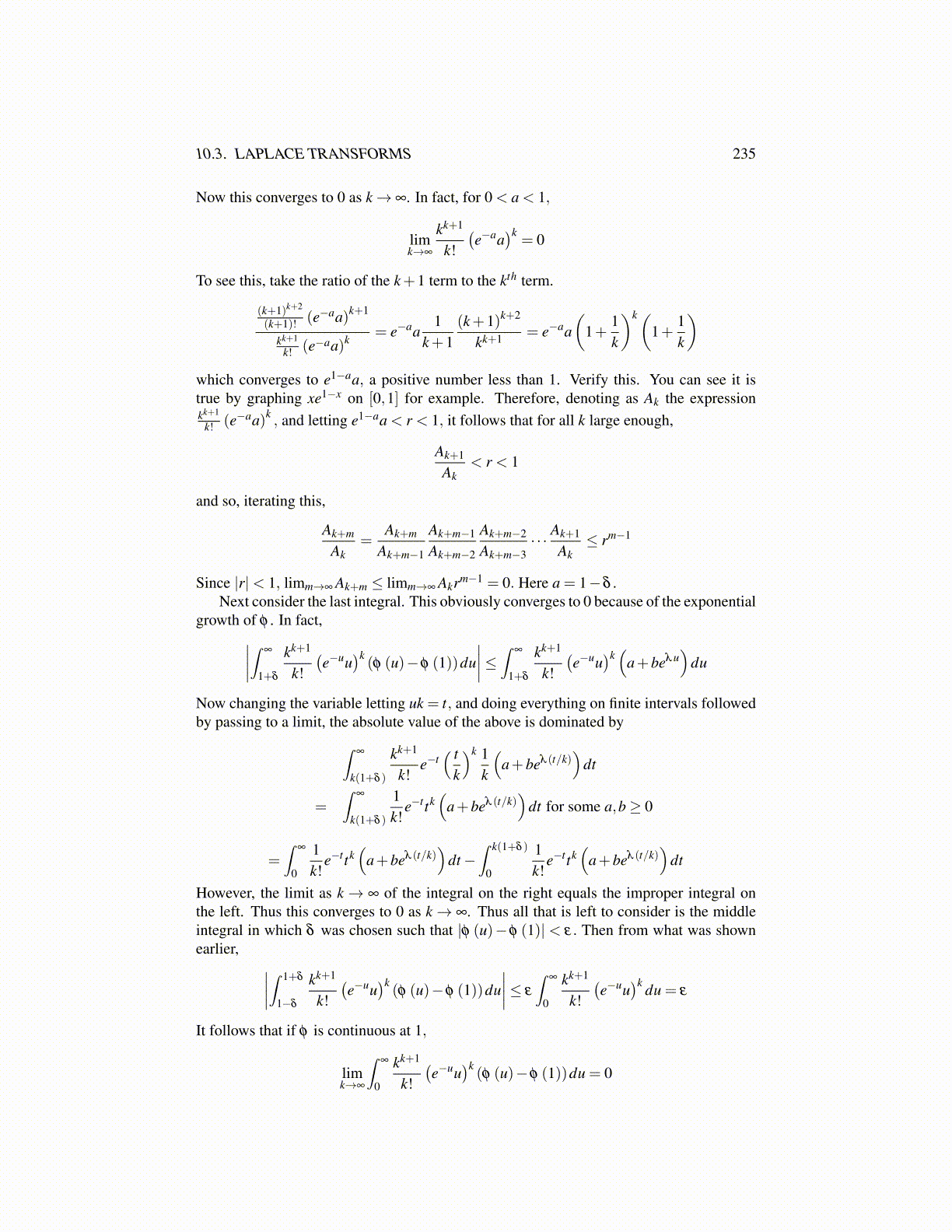
10.3. LAPLACE TRANSFORMS 235
Now this converges to 0 as k → ∞. In fact, for 0 < a < 1,
limk→∞
kk+1
k!(e−aa
)k= 0
To see this, take the ratio of the k+1 term to the kth term.
(k+1)k+2
(k+1)! (e−aa)k+1
kk+1
k! (e−aa)k= e−aa
1k+1
(k+1)k+2
kk+1 = e−aa(
1+1k
)k(1+
1k
)which converges to e1−aa, a positive number less than 1. Verify this. You can see it istrue by graphing xe1−x on [0,1] for example. Therefore, denoting as Ak the expressionkk+1
k! (e−aa)k, and letting e1−aa < r < 1, it follows that for all k large enough,
Ak+1
Ak< r < 1
and so, iterating this,
Ak+m
Ak=
Ak+m
Ak+m−1
Ak+m−1
Ak+m−2
Ak+m−2
Ak+m−3· · · Ak+1
Ak≤ rm−1
Since |r|< 1, limm→∞ Ak+m ≤ limm→∞ Akrm−1 = 0. Here a = 1−δ .Next consider the last integral. This obviously converges to 0 because of the exponential
growth of φ . In fact,∣∣∣∣∫ ∞
1+δ
kk+1
k!(e−uu
)k(φ (u)−φ (1))du
∣∣∣∣≤ ∫ ∞
1+δ
kk+1
k!(e−uu
)k(
a+beλu)
du
Now changing the variable letting uk = t, and doing everything on finite intervals followedby passing to a limit, the absolute value of the above is dominated by∫
∞
k(1+δ )
kk+1
k!e−t( t
k
)k 1k
(a+beλ (t/k)
)dt
=∫
∞
k(1+δ )
1k!
e−ttk(
a+beλ (t/k))
dt for some a,b ≥ 0
=∫
∞
0
1k!
e−ttk(
a+beλ (t/k))
dt −∫ k(1+δ )
0
1k!
e−ttk(
a+beλ (t/k))
dt
However, the limit as k → ∞ of the integral on the right equals the improper integral onthe left. Thus this converges to 0 as k → ∞. Thus all that is left to consider is the middleintegral in which δ was chosen such that |φ (u)−φ (1)| < ε. Then from what was shownearlier, ∣∣∣∣∫ 1+δ
1−δ
kk+1
k!(e−uu
)k(φ (u)−φ (1))du
∣∣∣∣≤ ε
∫∞
0
kk+1
k!(e−uu
)k du = ε
It follows that if φ is continuous at 1,
limk→∞
∫∞
0
kk+1
k!(e−uu
)k(φ (u)−φ (1))du = 0